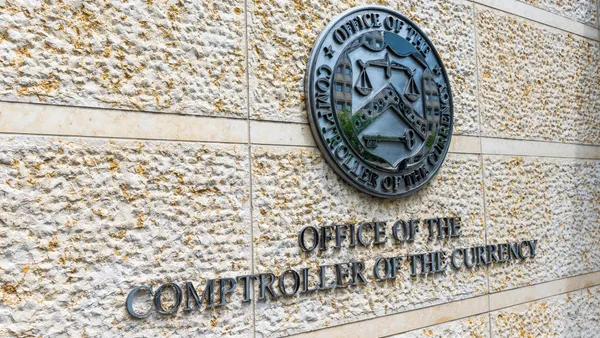Regulators’ capital requirements proposal continues to draw heat from bank executives as critics sound an alarm over possible spillover effects, including higher capital costs.
Citizens Bank CEO Bruce Van Saun, speaking in Philadelphia, said Thursday he was optimistic about upcoming changes amid a current of opposition from industry and other stakeholders. The proposal would also likely be pulled back by a future Republican administration, he said.
“The current administration has been pushing on these reforms, which I think are overboard,” Van Saun said at an event hosted by the Philadelphia Business Journal. “A new administration, if the Republicans win, would probably chop some of that pretty fast.”
Michael Barr, the Federal Reserve’s vice chair for supervision and a Democrat, is rewriting the proposal, Reuters reported this month. Fed Chair Jerome Powell, a Republican, told lawmakers he expects the new proposal to have “broad and material changes.”
The new requirements are set to increase, by an average of 19%, the amount of capital U.S.-based global systemically important banks would be forced to hold. Banks with between $250 billion and $1 trillion in assets, by comparison, face a roughly 10% uptick, while banks with $100 billion to $250 billion would see a 5% jump in capital holdings.
The public comment period on the capital requirements proposal closed Jan. 16, and 97% of the roughly 400 submissions were critical, according to a February analysis by law firm Latham & Watkins. Van Saun pointed to the broad base of opposition to the proposal, including 80% of respondents who weren’t from the banking sector.
“It was the broad industry [that] was concerned about what this regulation would do to mortgage access for low- to moderate-income people, for credit for small businesses,” he said. “That was really powerful … it’s not the banks just talking their own book. The rest of the economy is saying this has to be rethought.”
Echoing feedback from industry counterparts, Van Saun suggested the proposal went too far and didn’t consider negative effects on the banking industry and businesses seeking capital.
“If there's an event or crisis in the market, the regulators come in trying to make some significant changes and typically they overreact and the pendulum goes too far,” he said. “Is it going to make it … more expensive to be in business so you're going to have to hold more capital, more liquidity, issue expensive funding, and does that crowd out lending or increase the price of credit? We think it does.”
The post-SVB state of play
Van Saun pushed back on the notion that the bank failures of 2023 were part of a broader regional banking crisis. He noted that Silicon Valley Bank and First Republic differed from traditional regional banks because of their quick deposit growth and niche business models.
“They were narrowly focused on sectors of the market and took in a lot of large deposits. ... Both banks went from about $50 billion to $220 billion in a four-year period,” he said. “Generally, banks don’t try to grow that fast; they try to be disciplined, diversified and make sure their deposit base is very strong and granular.”
Although its bid for First Republic failed — JPMorgan Chase acquired the failed bank last May — Citizens was able to expand its outreach to private-bank clients, especially those who chose not to move over to JPMorgan Chase. Citizens launched its private bank in October.
Citizens Private Bank “has been really a very exciting initiative for us to grow up in that space and fill the void,” from the demise of Silicon Valley Bank and First Republic, he said. “We started with strong defense to strengthen the balance sheet even more, but having that strong position allowed us to play some offense and so we took advantage of that by launching Citizens Private Bank.”
Citizens Private Bank had $1.2 billion in deposits by the end of 2023, a figure it expects will double this quarter, Van Saun said.












